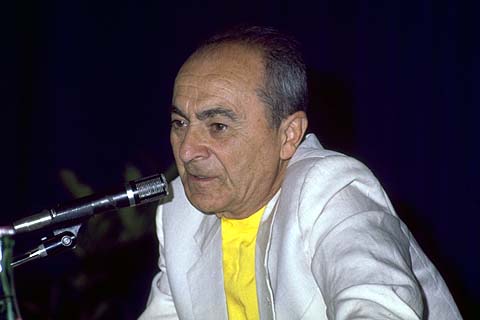Dino Gavina-Production is communication
‘The work of Dino Gavina forms a necessary point of reference for whoever is concerned with imaginative art and its relation with production processes. Dino Gavina began producing furniture in Bologna at the end of the 50s. From the very first pieces produced by a number of local designers, a creative process begins inspired and made possible by constant interaction with other exponents of the art world in its various forms. Names such as Man Ray, Marcel Duchamp, Sebastian Matta, Carlo Scarpa, the Castiglioni brothers and Marcel Breuer have become better known and more widely appreciated thanks to the work of Dino Gavina. His constant concern and the aim of his research into the world of objects which surround us in our day to day life has always been that of producing something to help make life more visually pleasing by using the potential of industrial production techniques. He is constantly on the look out for what is both useful and aesthetic, but not in a limited fashion-following way. The freedom he allows himself in his search for what is really valuable leads him to explore areas of the past, the artistic influence of which is generally seen as a closed chapter. This was the case, for example, of the “Tosama” wooden chair, whose Renaissance inspiration was evident. Industrial production can be an excellent medium to convey these discoveries since it reaches people more rapidly and readily than any other, bringing its products into their daily life for daily use. The exhibition ‘Dino Gavina: Production is Communication’ puts particular emphasis on the enormous possibility – responsibility pattern inherent in manufacturing processes. Gavina’s aim is to show us that it is possible to live surrounded by lastingly beautiful objects and he achieves this in a number of ways: through particular choices (some of which may seem contradictory), through constant contact with important figures from the art world in general, through new projects and by adapting policies suited to achieving his aim. The exhibition includes furniture, furnishings, lights and lamps and design models, as well as a series of sculptured furniture, or ‘ultra-furniture’ as Gavina calls it. All are objects for the home which transcend the purely functional sphere to become real works of art.’










